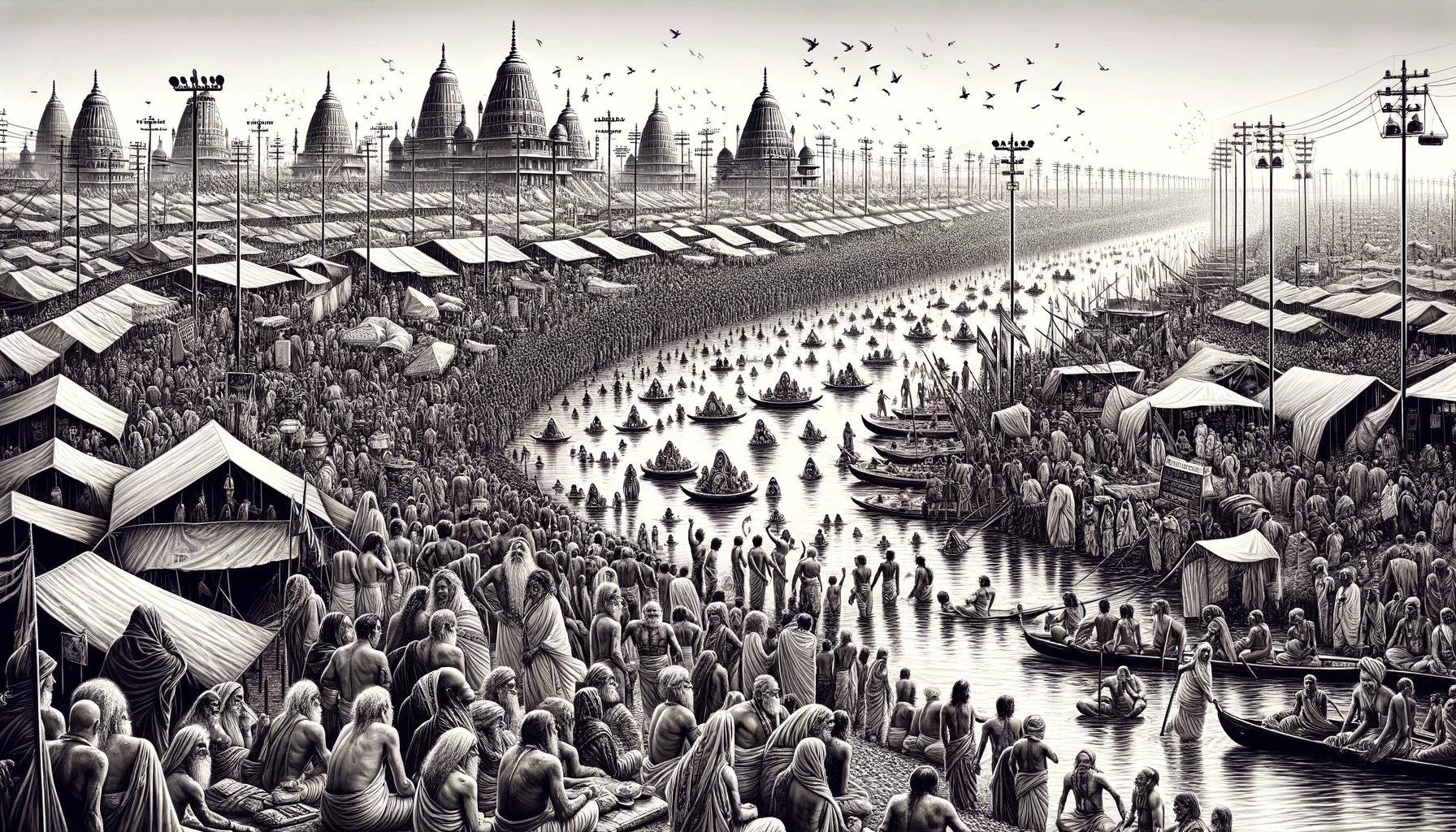Introduction
The Kumbh Mela, held every three years at one of four sacred locations in India (Haridwar, Prayagraj (Allahabad), Nashik, and Ujjain), is not just a religious gathering but a celestial spectacle. It is a festival that transcends the mundane, drawing millions of devotees, sadhus, and seekers from across the globe to participate in a ritual of purification and renewal. The Kumbh Mela’s origins are steeped in ancient mythology and history, making it a vibrant confluence of the spiritual and the cultural.
Mythological Beginnings
According to Hindu mythology, the Kumbh Mela commemorates the epic battle between gods and demons over the nectar of immortality. It is believed that Lord Vishnu, disguised as the enchantress Mohini, whisked away the kumbh (pot) containing the amrit (nectar) and in the process, four drops fell on the earth at the sites of the current Kumbh Melas. This divine occurrence is said to charge these places with immense spiritual power.
A Journey Through Time
The historical significance of the Kumbh Mela is vast, with records dating back to ancient Indian scriptures, which detail the ritualistic importance of river bathing festivals in Hinduism. Over centuries, the Kumbh Mela has grown in scale and significance, attracting not just spiritual leaders and their followers but also travelers, scholars, and curious minds from around the world, seeking to witness or study this massive human gathering.
Experiencing the Kumbh Mela
- The Sacred Bath: Taking a dip in the holy rivers during the Kumbh Mela is believed to cleanse one of all sins and lead to salvation. The specific dates for these baths are determined by astrology and hold immense significance.
- The Sadhu Assemblies: The Kumbh Mela is famous for the assembly of sadhus from different sects, including the Naga Sadhus, known for their austerity and powerful presence. These ascetics play a crucial role in the ceremonies and rituals of the Kumbh.
- Cultural and Spiritual Discourses: The festival is a hub for religious and spiritual discourses, where leading gurus and spiritual leaders share their wisdom with the masses.
- A Feast for the Senses: Beyond the spiritual, the Kumbh Mela is a spectacle of colors, sounds, and smells. The vast campsites, processions, and the sheer diversity of cultures present make it a photographer’s and cultural enthusiast’s paradise.
The Significance of the Kumbh
The Kumbh Mela is not just a physical and spiritual journey but a testament to the enduring power of faith in human life. It showcases the rich tapestry of Indian religious traditions and the unifying power of belief. The festival’s ability to draw millions into a shared experience of faith, regardless of worldly status, is a powerful reminder of humanity’s search for the divine.
Planning Your Visit
For those planning to experience the Kumbh Mela, it’s crucial to prepare for the event’s vast scale and intensity. Accommodations can range from luxurious camps to simple ashrams, with advance booking highly recommended. Understanding the cultural norms and participating respectfully in the rituals are essential for a fulfilling experience.
Conclusion
The Kumbh Mela stands as a monumental event in the spiritual calendar, offering a glimpse into the soul of India. It is a phenomenon that goes beyond religion, embodying the collective consciousness of a nation and the timeless quest for enlightenment. Whether you’re a devout pilgrim, a spiritual seeker, or simply an observer of humanity’s diverse expressions of faith, the Kumbh Mela is an experience that transcends description, promising memories that last a lifetime.
